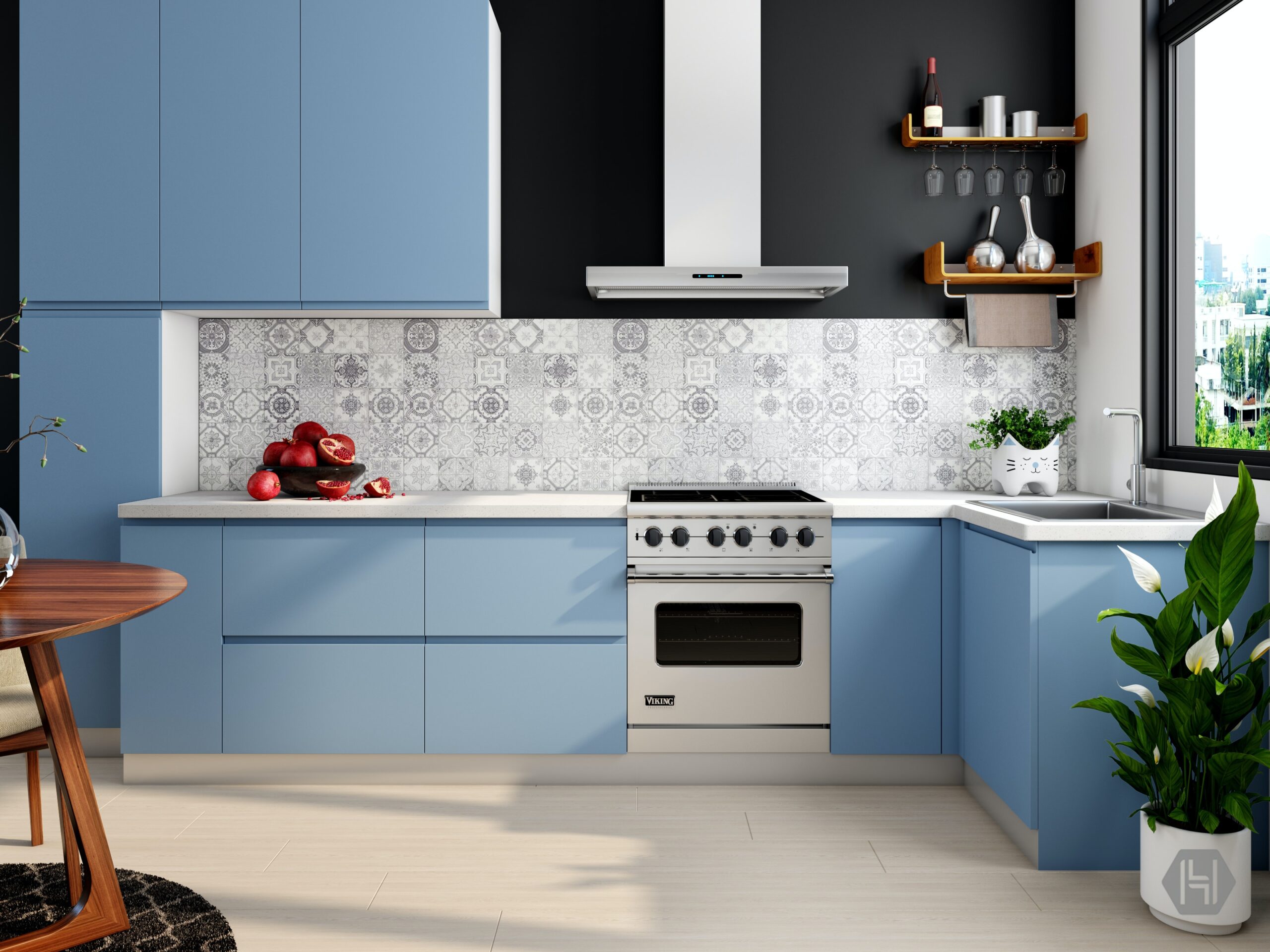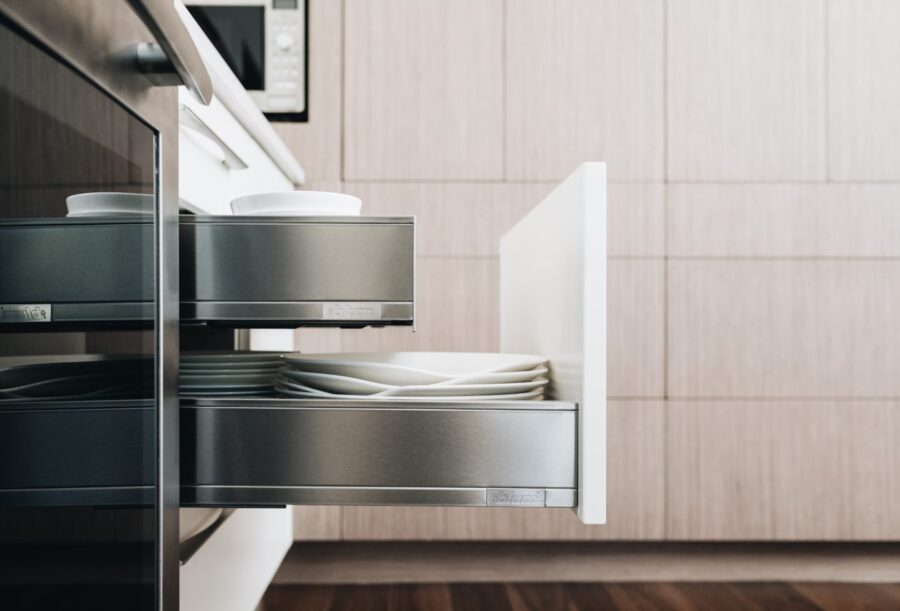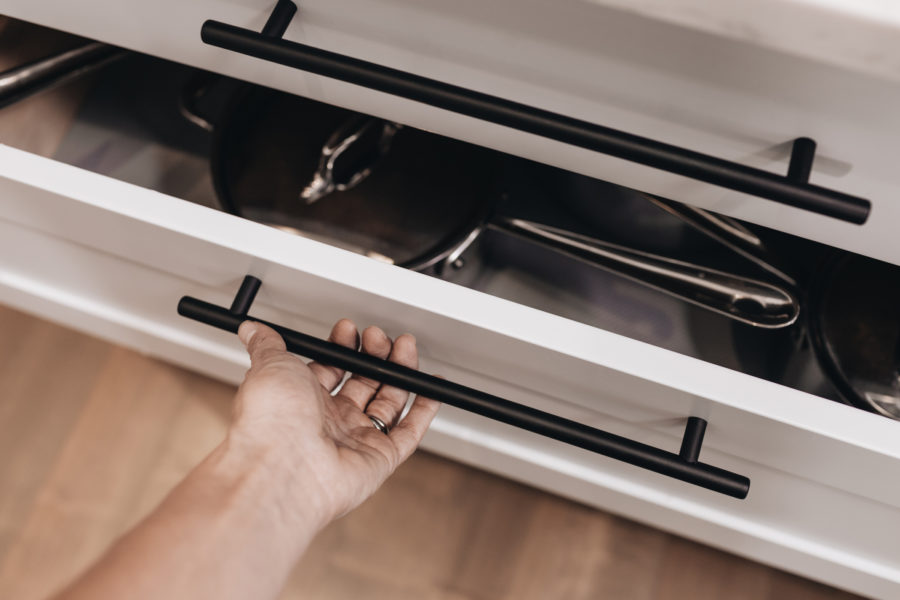Kitchens began as corners of caves, makeshift fires near the shoreline, or the very location where found was found or captured. To say the physical location has changed over the years is a gross understatement. Inevitably, kitchens have changed. Features have evolved, and cabinets have changed along with them.
In this post, we’re taking a look back in time to assess four of the biggest innovations that altered the course of cabinetry making, and how we interact with the humble kitchen cabinet.

Soft Close Hinges

Hinges are often overlooked as being a quintessential aspect of nearly every cabinet in the house - and while that’s true in some regard, the succession and development of the soft-close hinge revolutionized cabinet design and function.
Many consider the hinge to be one of the greatest technological advancements of the ancient world, with early hinges being unearthed in archaeological sites dating back as far as 1600 BC. They were originally used to make massive, heavy object mobile, such as stone walls/doors - notably in the ancient city of Hattusa, world heritage site and an eastern capital of the Hittite Empire (modern-day Turkey) during the Bronze age.
The Romans were one of the first civilizations to integrate hinges into household applications, and even had a Goddess of hinges, known as Cardea.
Soft close hinges follow much the same principle as a standard hinge, acting on a mechanical bearing that connects two solid objects - in the kitchen, typically the cabinet door and the base cabinet. With a soft close hinge, users eliminate the wear and tear of slamming a solid wood door over and over innumerable times, sometimes causing irreparable damage to both wooden elements, and eliminating loud noises. Soft close hinges also add a certain panache to the cabinet - an otherwise open and shut (pun intended) case in the kitchen, elevating the experience to the status as a must-have kitchen feature for most discerning homeowners creating their dream kitchen.
Kitchen Art Design exclusively uses Blum hardware in our custom cabinets. Blum’s BLUMOTION soft and effortless closing mechanisms are the pinnacle of precision and ease.
Sliders
Cabinet drawer sliders changed the ease of which homeowners were able to use and access their storage in a more effortless manner. Prior to the 1960’s, cabinets operated on a strict wood-on-wood, or metal-on-metal basis, using friction as a base for opening and closing drawers.
Rolling sliders allowed for cabinets to accommodate more and more weight and for them to be useable as homeowners loaded their drawers with kitchen accoutrement. Prior to the rolling slider, enough weight in a drawer would make opening and closing the drawer itself a real chore.
Blum hardware introduced its first roller runner drawer slides in 1966. The evolution of the drawer slider continued into the early 1990’s with the advent of box systems made from aluminum, stainless steel, and steel configurations, to more efficiently distribute weight in the drawer and improve structural rigidity.
Hidden Cutting Boards
Not so much an innovation, as a development of human behaviour and kitchen culture, the slide-out cutting board is an ultra useful resource that gives us an extra foot or so of counter space, a handy place to cut veggies, cheese, or other ingredients, and just as quickly, slides away out of sight.
However, those handy, pull-out cutting boards were used to in kitchens today aren’t so new - in fact, the first hidden cutting boards were used in traditional country kitchens as breadboards back into the 1940s and 1950’s.
These old-school counter extenders were once used as a separate space to knead and prepare dough for bread-making and were soon re-imagined as cutting boards. Typically made of wood, these boards aren’t the best for cutting meat - typically, slide-out cutting boards aren’t washed or disinfected like a classic butcher block, so cleaning them and sliding them back into their home can cause moisture to develop mildew and mould.
If you’re considering installing a new school rendition of the hidden cutting board, consider a solid maple as your material of choice. Maple is tough, durable, and naturally antimicrobial.
Storage Drawers

Kitchen storage has long been one of the most dissected and researched topic in the kitchen/cabinet industry. Storage is one of the main pillars of stylish and functional kitchen design, and without ample amounts of it, your dream kitchen will quickly wind up cluttered with equipment, gadgets, and utensils - eating up coveted counter space and prep room in the process.
Storage drawers are sturdy, tough and deep cabinet drawers that are custom designed to facilitate a huge amount of storage room for pots, pans, blenders, slow cookers, toasters, and whatever other kitchen goodies you need to store away.
Prior to the storage drawer of today, homeowners would typically keep these larger items in their pantry, or a kitchen closet to alleviate their counters from clutter, but no more. Integrating storage drawers into your dream kitchen space means keeping your things right where you need them, organized for use, and within reach.
You may not put a ton of thought into the minuscule aspects of your dream kitchen that help make it the polished bit of space you’ve always longed for - but there innumerable many subtle innovations that have revolutionized the kitchen, and therefore the cabinet industry, we overlook every day.
The culinary space has evolved by leaps and bounds since our first foray into cooking. From the forest floor to upscale and functional culinary zones, kitchen cabinetry has helped innovate and shape the modern landscape of the proverbial dream kitchen.
